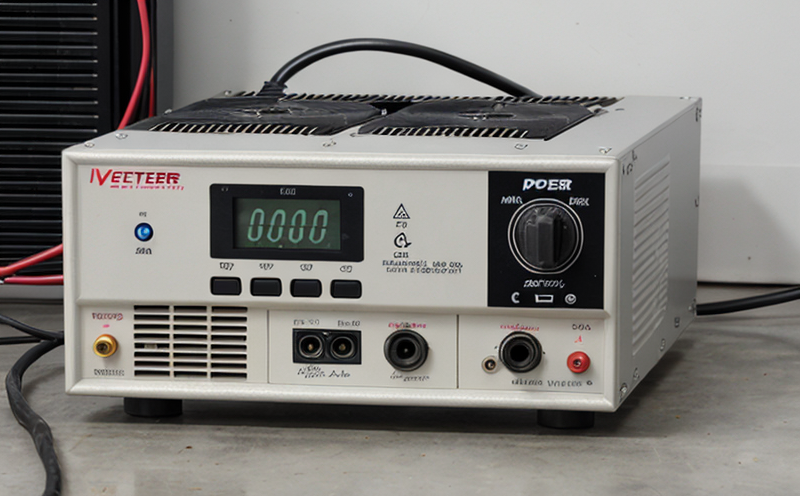IEC 60529 IP Protection Testing of Inverter Enclosures
The International Electrotechnical Commission (IEC) Standard IEC 60529 defines the classification system for degrees of protection provided by enclosures against access to hazardous parts and against ingress of foreign objects. This standard is widely used in various sectors including energy, renewable energy, electronics, and automotive industries.
For inverters and power electronics, IP ratings are critical as they ensure that the devices can operate reliably under harsh environmental conditions such as dust, water, and temperature extremes. Testing these enclosures according to IEC 60529 ensures compliance with international standards and enhances product safety, reliability, and durability.
The testing process involves subjecting the enclosure to a series of controlled environments designed to replicate real-world exposure scenarios. This includes dust ingress tests, water ingress tests (spray, jet, immersion), and temperature cycling tests. The specimen is prepared by ensuring it meets all design specifications before undergoing these rigorous tests.
During testing, specialized equipment simulates environmental conditions that the enclosure may encounter in use. For instance, spray testing assesses the ability of an enclosure to prevent water ingress when exposed to a high-pressure jet. Immersion tests check for the integrity of the enclosure under submersion conditions. Temperature cycling ensures the enclosure can withstand wide temperature variations without compromising its protective capabilities.
The acceptance criteria for IEC 60529 testing are stringent and vary based on the IP rating assigned to the enclosure. For example, an IPX4 classification requires the enclosure to withstand splashing water from any direction, while an IPX8 classification ensures it can operate continuously in water up to 1 meter deep.
The results of these tests provide critical data that informs product design improvements and helps manufacturers meet regulatory requirements. By adhering to IEC 60529 standards, companies ensure their products are safe, reliable, and suitable for use in challenging environments.
Understanding the importance of IP ratings is crucial for quality managers, compliance officers, R&D engineers, and procurement teams involved in the development and production of inverter enclosures. These professionals need to be aware of the specific test parameters required by IEC 60529 to ensure their products meet international standards.
Applied Standards
The primary standard applied for this testing is IEC 60529, which provides a comprehensive classification system for the protection of enclosures against ingress. Additionally, the following supplementary standards may be relevant depending on specific industry requirements:
- IEC 61431: Protection ratings (IP Code) for enclosures
- EN 50289-1: Environmental conditions and test methods for electronic equipment, Part 1 - General requirements
- ASTM F2792-17: Standard specification for resistance to water spray for electrical equipment
The application of these standards ensures that the testing process is rigorous and meets international best practices. Compliance with these standards is essential for ensuring product reliability and safety in diverse environmental conditions.
Benefits
- Enhanced Product Reliability: Testing according to IEC 60529 ensures that the enclosure can withstand harsh environmental conditions, leading to increased product reliability.
- Compliance with Standards: Meeting IP rating requirements demonstrates compliance with international standards, which is crucial for global markets.
- Maintained Safety: Proper testing helps maintain safety by preventing the ingress of dust and water into sensitive electronic components.
- Improved Durability: The rigorous testing process ensures that the enclosure can withstand environmental stresses, thereby enhancing its durability.
Industry Applications
The testing of inverter enclosures according to IEC 60529 is essential across various industries where robust protection against the elements is required. Key applications include:
- Renewable Energy: Inverters used in solar and wind energy systems must operate reliably under varying environmental conditions.
- Automotive Electronics: Vehicle electronics need protection from water ingress to ensure safety and performance.
- Marine Electronics: Equipment for use on ships and offshore platforms should withstand saltwater and high humidity.
- Agricultural Machinery: Inverters in agricultural equipment must resist dust and moisture exposure during operation.





